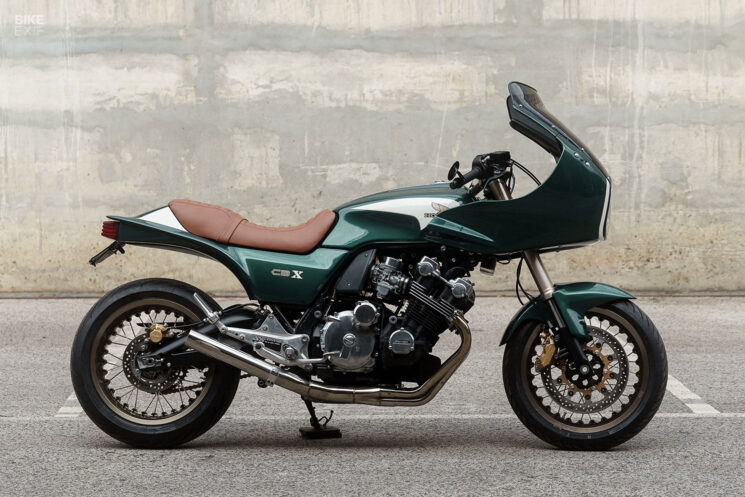
The Honda CBX 1000 was only in production for four years, but that was enough time for it to leave a lasting impression on the motorcycle industry. First released it in 1978 as a screaming six-cylinder naked superbike, it later faced stiff competition from its stablemate—the equally iconic CB900F. So the Japanese marque redesigned it as a sport tourer, halfway through its tenure.
The updated ‘CBX-B’ had a touring fairing, optional panniers, and Honda’s new-at-the-time Pro-Link mono-shock setup. It was a hair less powerful than before, but that didn’t stop it from becoming a legend in its own right. If you park a CBX and CBX-B next to each other, you could argue that the latter has more presence.
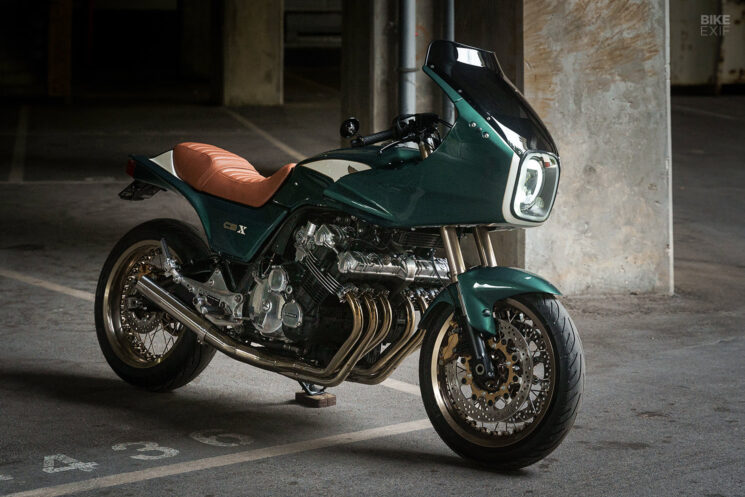
It’s that mystique that prompted the owner of this 1982 Honda CBX 1000 Pro-Link to buy it. Enamored with the fusion of modern technology and ancient traditions found in Japanese cities like Tokyo and Kyoto, he was on the hunt for a classic motorcycle that embodied that philosophy. When he found the CBX, the sheer brutalism of its six-cylinder engine was impossible to ignore.
“In the eyes of this enthusiast, the engine wasn’t just a mechanical marvel; it was the soul of the motorcycle, much like the heart in a human body,” says Tiago Gonçalves, founder of the Portuguese custom shop, Unik Edition. “This revelation laid the foundation for a transformative project, one that would honor the motorcycle’s origins while infusing it with a new identity.”
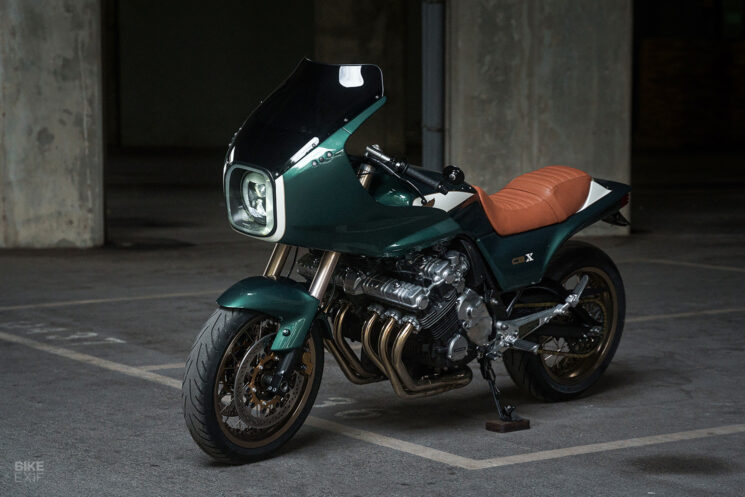
Tiago and his partner-in-crime, Luis Gonçalves (no, they’re not brothers), were tasked with turning the Honda CBX 1000 into a stylish restomod with a host of modern upgrades. The idea was to retain the CBX’s retro sport-touring DNA but give it a fresh aesthetic.
“Preserving the most significant elements of the Honda CBX 1000 became a guiding principle for us,” says Tiago. “The transformation was not about erasing the past, but rather, enhancing it. As a result, the front fairing, the fuel tank, the rear fairing, and the rear brake light all stood as a testament to the motorcycle’s heritage, allowing enthusiasts to trace its lineage effortlessly.”
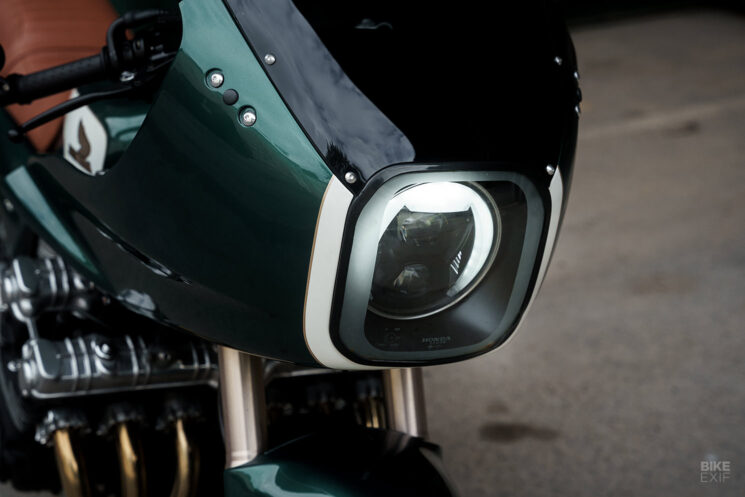
At the front, Tiago and Luis removed the fairing’s lower extensions and trimmed the main unit down for a slimmer look. The square headlight housing was retrofitted with an LED unit, and the front fender was swapped for a more modern-looking part. A tinted windshield adds an extra hit of retro style to the CBX’s visage.
Keen eyes will also spot a set of upside-down forks. They’re from a 1994 Kawasaki ZX-9R, which also donated its twin front and single rear Nissin brake calipers.
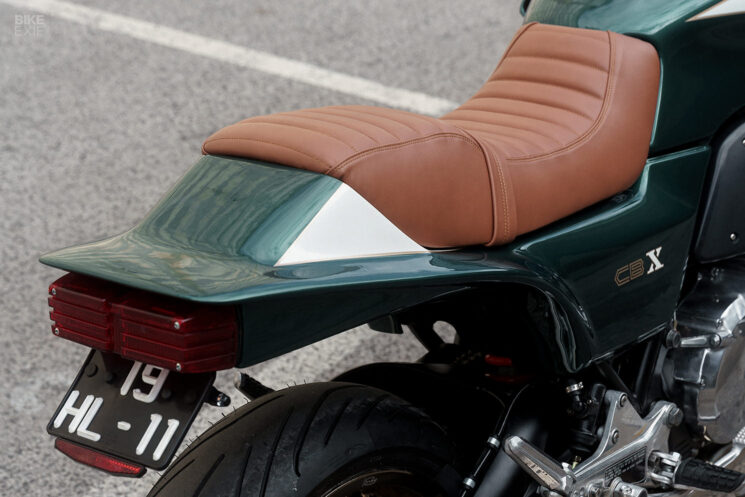
Unik used similar tricks out back. The subframe was shortened before the CBX 1000’s OEM tail unit was cut, trimmed, and put back together. The leather seat is all-new, but it’s been styled with the sort of chunkiness that an early-80s sport tourer demands.
The modifications are as clever as they are subtle. The side covers now blend seamlessly into the tail unit, and the whole thing tapers down to accommodate a slimmer taillight. (That’s the original Honda taillight back there, but it’s been cut and shut to take up less space.)
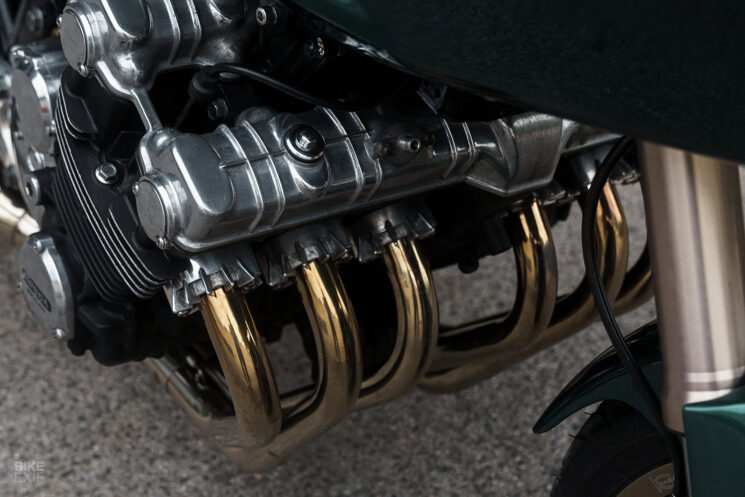
Lower down, the guys went to considerable effort to install the swooping swingarm from a Triumph Street Triple. The gorgeous spoked tubeless wheels are from Kineo, measuring 17” at both ends. They’re wrapped in modern Michelin sport-touring tires, with the rear tire’s width bumped up to 180.
Moving to the motor, Unik cleaned, repainted, and polished the entire thing for a factory-level aesthetic. The transmission was rebuilt with shorter ratios, a new K&N filter was installed, and the carbs were tuned. The mighty CBX demands an appropriate exhaust, so the crew fitted a full six-into-one system from Delkevic.

The cockpit didn’t go untouched either. Tiago and Luis used the Kawasaki ZX-9R’s yokes and extended the forks to accommodate a set of raised clip-ons. The bars wear new grips, Motogadget bar-end mirrors, and sporty micro-switches from Rebel Moto.
The duo also liberated the original dashboard of its instrumentation and filled in the holes that were left behind. A digital Motogadget speedo now sits front and center, neatly embedded into the dashboard, with a single push-button to operate it. The bike’s been rewired around a Motogadget brain, with a set of Motogadget LED turn signals completing the set.
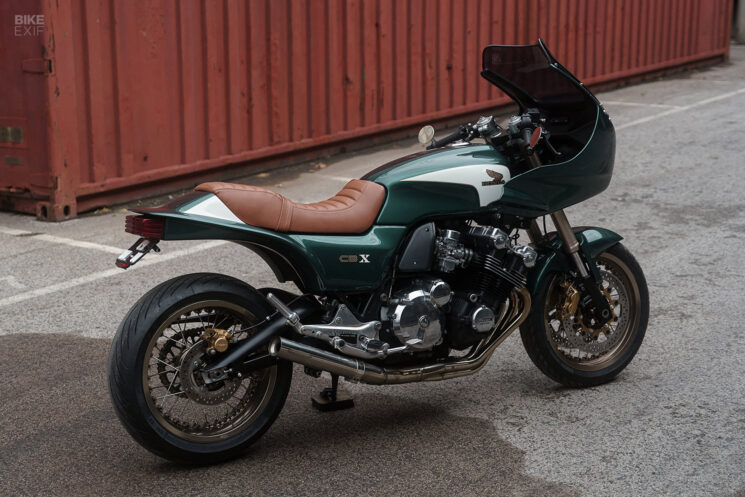
When the time came to paint the CBX, Unik decided to infuse the Japanese icon with a hefty dose of European panache. The green hue is Ferrari’s Verde Pino Metallizato, inspired by the impossibly elegant 1963 Ferrari 250 GT Berlinetta Lusso.
The deep metallic green foundation is punctuated by sections of white, bordered by subtle gold striping. Classic Honda Wing tank graphics and original ‘CBX’ logos help the bike ride the line between resto and mod.
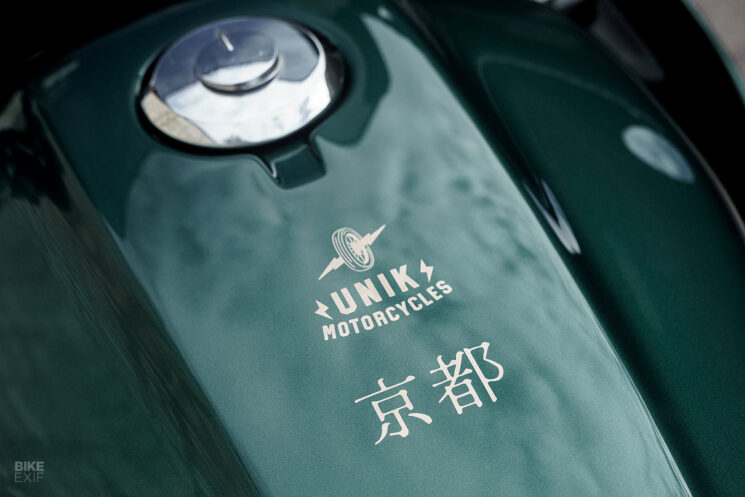
A fusion of Japanese muscle and European sophistication, this Honda CBX 1000 is one of the tidiest restomods we’ve seen. Unik Edition’s craftsmanship is upstaged only by their sharp eye and their impeccable judgment.
Unik Edition | Facebook | Instagram | Images by Tiago Almeida
